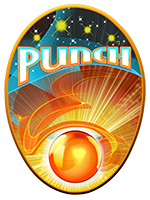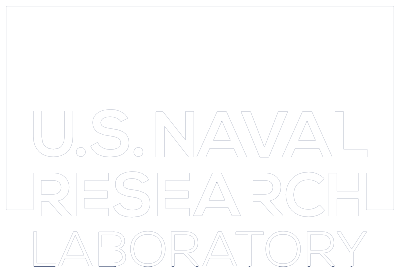Science Working Groups

Various team members toasting to PUNCH at the first science meeting June 3-5, 2020
PUNCH Science Working Groups are composed of PUNCH team members who are tasked with closing the proposed science objectives for the PUNCH mission. See sections below for Working Groups member roles and explanation of Working Group topics. Working Group activities are open to the full scientific community including Topical Focus Groups, sessions at PUNCH science meetings, and sessions at community conferences. Go to our Get Involved with PUNCH Science page to learn more!
Click on a working group title below to view group members, or | .
Explanation of this topic
What we're working on:
- Development of PUNCH Flow Tracking data product:
- Completed testing and delivery of flow-tracking code to the PUNCH Science Operations Center, which allows PUNCH to provide an augmented data product that gives the optical flow velocity of features in PUNCH data.
- During commissioning and early science operations, the performance of the flow-tracking code and the resulting data products will be evaluated and validated.
- Community tools and support:
- The code to produce the flow maps has been published and access tools and supplemental analysis code will be made available in the PUNCH Bowl.
- PUNCH Documentation is being updated with information on using the associated data products and analysis code.
- The Helionauts.org community forum hosts questions and detailed discussions of PUNCH data products. Support for cross-team communication is being facilitated through private groups.
- Interactive Data Language (IDL) code alternatives to the PUNCH Python code tools are being developed. Helionauts.org is hosting a “support group” for developers and users of IDL code for PUNCH data.
- Accuracy evaluation of PUNCH Flow Tracking:
- Two models are being used to evaluate the accuracy of the PUNCH Flow tracking code. The first is the Synthetic Coronal Outflow Model (SynCOM) led by Dr. Valmir Moraes Filho (see reference for full information). SynCOM is an empirical model that creates synthetic images based on the observed properties of real data. The second is an MHD model developed by Dr. Erika Palmerio of Predictive Science Inc.
- A “Flow Tracking Challenge” was launched, based on the SynCOM data to evaluate and compare the performance of different flow tracking methods. All members of the scientific community are encouraged to access the challenge data to assess the accuracy of their methods.
- Scientific Research:
- The Flow Tracking Paper for Solar Physics PUNCH Topical Issue is being produced by Dr. Raphael Attié et al.
- Special sessions at scientific meetings will facilitate discussions and sharing of results across the scientific community.
Group Members
|
Scientist |
Role |
|---|---|
|
WG co-lead; Image analysis of polar flows |
|
|
WG co-lead; Ball-tracking and motion extraction |
|
|
Monitor solar wind diagnostics; DSCOVR liaison |
|
|
Tomography; solar wind structure analysis |
|
|
Heliospheric modeling; in-situ analysis |
|
|
Solar wind theory; Interpretation of solar wind data |
|
|
3D wind speed interpretation |
|
|
Wind origin & structure; in-situ liaison |
|
|
Optical flow and motion extraction |
|
|
Working group coordination |
|
|
Wind origins; SoLO joint science |
|
|
Tomography; Solar wind structure analysis |
|
|
Tomography; solar wind structure analysis |
|
|
Heliospheric modeling (ENLIL) |
|
|
Corona-wind relation; image analysis; PSP liason |
Explanation of this topic
What we're working on:
- Recently published a paper on a type of density structure that PUNCH will be able to resolve and image through the inner heliosphere: "Periodic mesoscale density structures comprise a significant fraction of the solar wind and are formed at the sun."
- Working on forward modeling how traditional measurements of turbulence characteristics such as spectral slope, correlation length, and structure function features manifest in coronagraph and heliospheric image sequences.
- See our review paper "Mesoscale Structure in the Solar Wind” (2021) for an overview of the subject.
Group Members
|
Scientist |
Role |
|---|---|
|
WG leader; Turbulence and mesostructure analysis |
|
|
Breakup of solar plumes; Aditya liaison |
|
|
Coordination with ground-based radio observing techniques (IPS and FR) |
|
|
Turbulence transport modeling; turbulence simulation; in-situ analysis |
|
|
Solar wind theory; Interpretation of solar wind turbulence data |
|
|
Mesostructure and turbulence analysis |
|
|
3D location and polarization analysis |
|
|
Wind origin & structure; in-situ liaison |
|
|
Working Group Coordination |
|
|
Analyze solar wind turbulence |
|
|
Turbulence theory and interpretation; PSP/ISOIS liaison; in-situ comparison |
|
|
Coordinate PUNCH and radio observations |
|
|
Turbulence analysis |
|
|
PUNCH SOC data pipeline |
|
|
Coronagraphic image analysis; data product integration |
|
|
Turbulence analysis |
Explanation of this topic
What we're working on:
- Recently published a review paper on "The Sun's Alfven Surface: Recent Insights and Prospects for PUNCH."
- Working with PUNCH SOC to develop a Fourier-filtering pipeline for tracking downward-propagating blobs below the Alfven surface.
Group Members
|
Scientist |
Role |
|---|---|
|
WG co-lead; Solar wind theory; Interpretation of solar wind data |
|
|
WG co-lead; Solar wind and coronal modeling; turbulence analysis of Alfven surface |
|
|
Solar wind structure; Coordination with radio observations |
|
|
Coronal structure |
|
|
Alfven surface measurement and interpretation |
|
|
Working Group coordination |
|
|
Image processing and flow forward modeling |
|
|
Solar wind structure; Analysis of Alfven surface location and effects; PSP coordination |
|
|
Modeling of solar wind structure |
|
|
Corona-wind relation; image analysis; Analyze small-scale structures, plumes, and jets in the solar corona; PSP liason |
Explanation of this topic
What we're working on:
- Completed a test PUNCH-like dataset of several simulated CMEs
- Go to the PUNCH ICME Challenge Focus Topic Group page
- Working on the WG2A PUNCH science paper on The Dynamic Solar Wind: CME Research Enabled by PUNCH
- Defining projects on 3D Tracking of CMEs and forecasting space weather effects
- Working on flow tracking of CMEs
- Working on using PUNCH pB/B data to determine CME volumes and masses
Group Members
|
Scientist |
Role |
|---|---|
|
WG co-lead; Study of CME structure and evolution in the solar wind |
|
|
WG co-lead; Study of CME structure and evolution in the solar wind |
|
|
CME tracking; Space weather applications |
|
|
Heliospheric image interpretation; Coordination with ground-based radio observing techniques (IPS and FR) |
|
|
Analysis of CME source regions, interplanetary evolution and space weather effects. |
|
|
Coronagraphy; CME structure; lower coronal connection science; MLSO liaison |
|
|
CME tracking |
|
|
CME fine-scale interior structure |
|
|
3D location and polarization analysis |
|
|
Wind origin & structure; in-situ liaison |
|
|
Connect PUNCH observations to middle/lower coronal observations |
|
|
CME modeling; Working group coordination |
|
|
CME image interpretation |
|
|
Development and application of AI methods for 3D reconstructions of the solar corona and heliosphere. |
|
|
Coordinate PUNCH and radio observations |
|
|
CME modeling |
|
|
PUNCH SOC data pipeline |
|
|
Space weather applications |
|
|
Forward modeling of space weather events |
|
|
CME-heliosphere interactions; solar wind transients and tracking; comparison with in-situ measurements; synergies with SO/PSP |
|
|
Coronagraphic image analysis; data product integration |
|
|
CME structure; Image analysis |
Explanation of this topic
What we're working on:
- Writing paper for PUNCH pre-launch special issue; current working title: 'What We Think We Know About CIRs/SIRs'
Group Members
|
Scientist |
Role |
|---|---|
|
WG leader; 3D location and polarization analysis |
|
|
Development of heliospheric imager data assimilation |
|
|
CIR tracking; Space weather applications science |
|
|
Heliospheric image interpretation; Tomography; solar wind structure analysis |
|
|
Analysis of CIR source regions, interplanetary evolution and space weather effects. |
|
|
CIR small-scale morphology and 3D structure |
|
|
Working group coordination |
|
|
CIR image interpretation |
|
|
Tomography; Solar wind structure interpretation |
|
|
Tomography; solar wind structure analysis |
|
|
Coordinate PUNCH and radio observations |
|
|
Heliospheric modeling (ENLIL) |
|
|
CIR analysis; Space weather applications |
|
|
Forward modeling of space weather events |
|
|
Dynamic solar wind analysis |
Explanation of this topic
What we're working on:
- Establishing connections to members of the community involved with other missions for future PUNCH collaborations.
- Quantifying the relationship between Solar Energetic Particles (SEPs) peak particle flux and both the shock speed and shock speed jump.
- Exploring ways to estimate additional properties from the PUNCH observations particularly at the shock fronts using known statistical relationships such as the relationship between the solar wind temperature and speed and change in speed and the field strength.
Group Members
|
Scientist |
Role |
|---|---|
|
WG co-lead; Shock structure; SEP acceleration |
|
|
WG co-lead; Wind origin & structure; in-situ liaison |
|
|
Analysis of CMEs and CIRs and their interplanetary evolution including their associated shock waves; Correlation of PUNCH remote sensing and in-situ observations. |
|
|
Shock physics and CME; solar wind structure and turbulence; Coordination with radio observations |
|
|
CME-shock interaction analysis |
|
|
Shock cross-scale structure (“crinkles” and “jumps”) |
|
|
Working Group coordination |
|
|
Quantitative image analysis |
|
|
Turbulence theory and interpretation; PSP/ISOIS liaison; in-situ comparison |
|
|
Analysis of small-scale dynamics |
|
|
Coordinate PUNCH and radio observations |
|
|
Heliospheric modeling (ENLIL) |
|
|
Shock analysis; Space weather applications |
|
|
Analysis of solar wind variability and shocks in coronal and heliospheric imagery |
|
|
Shock structure; image analysis |
|
|
Analyze and interpret PUNCH data on solar wind variability |



